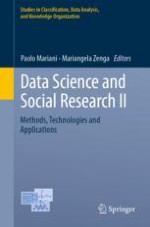2021 | OriginalPaper | Buchkapitel
A Classification Algorithm to Recognize Fake News Websites
verfasst von : Giuseppe Pernagallo, Benedetto Torrisi, Davide Bennato
Erschienen in: Data Science and Social Research II
Aktivieren Sie unsere intelligente Suche, um passende Fachinhalte oder Patente zu finden.
Wählen Sie Textabschnitte aus um mit Künstlicher Intelligenz passenden Patente zu finden. powered by
Markieren Sie Textabschnitte, um KI-gestützt weitere passende Inhalte zu finden. powered by
